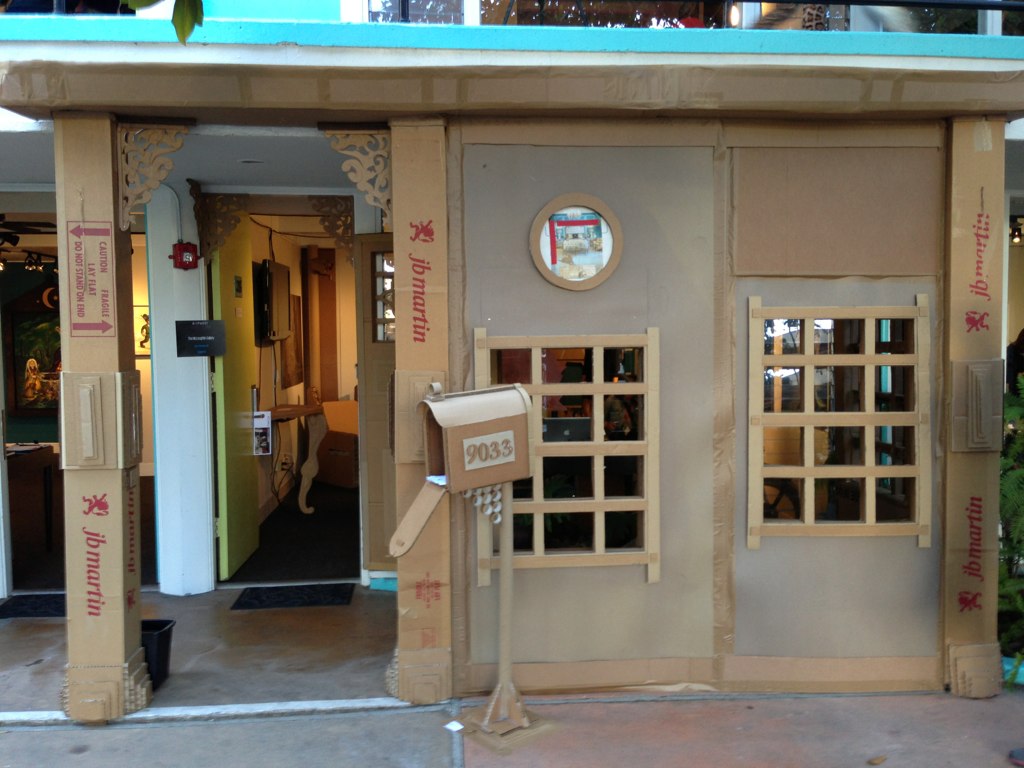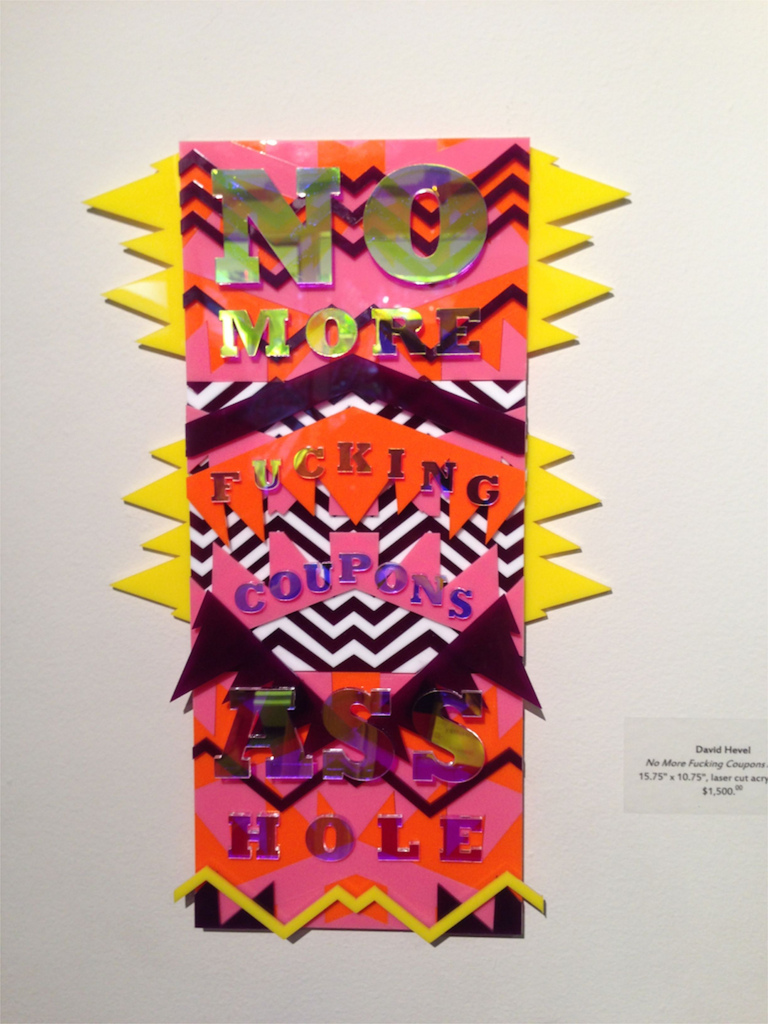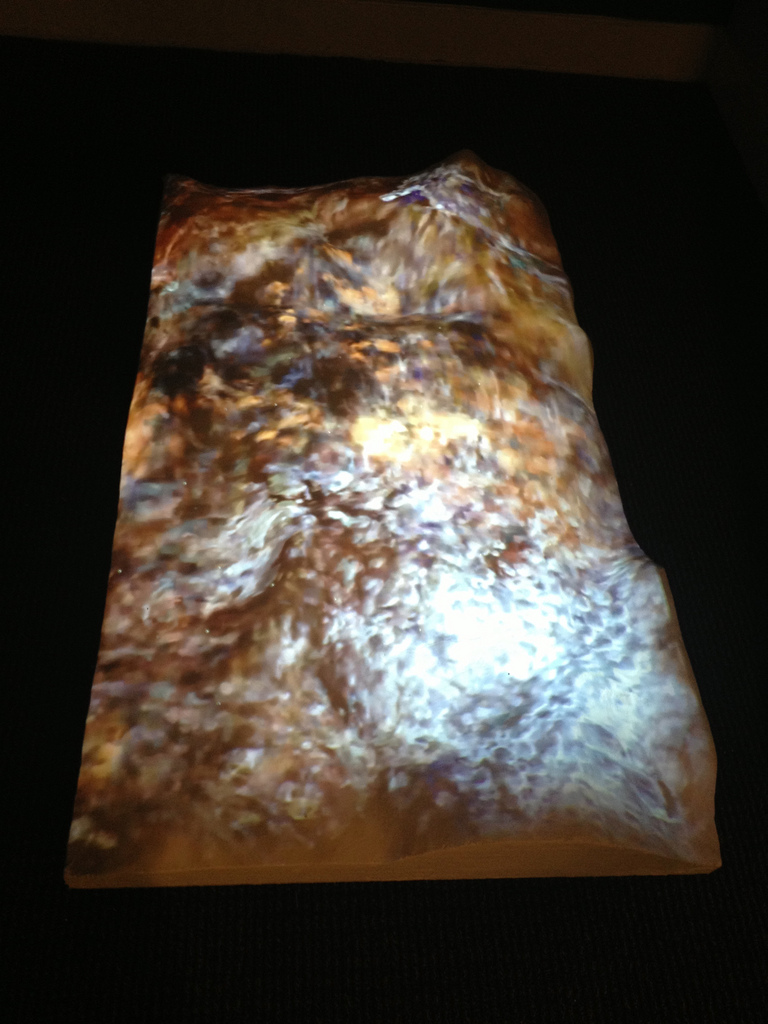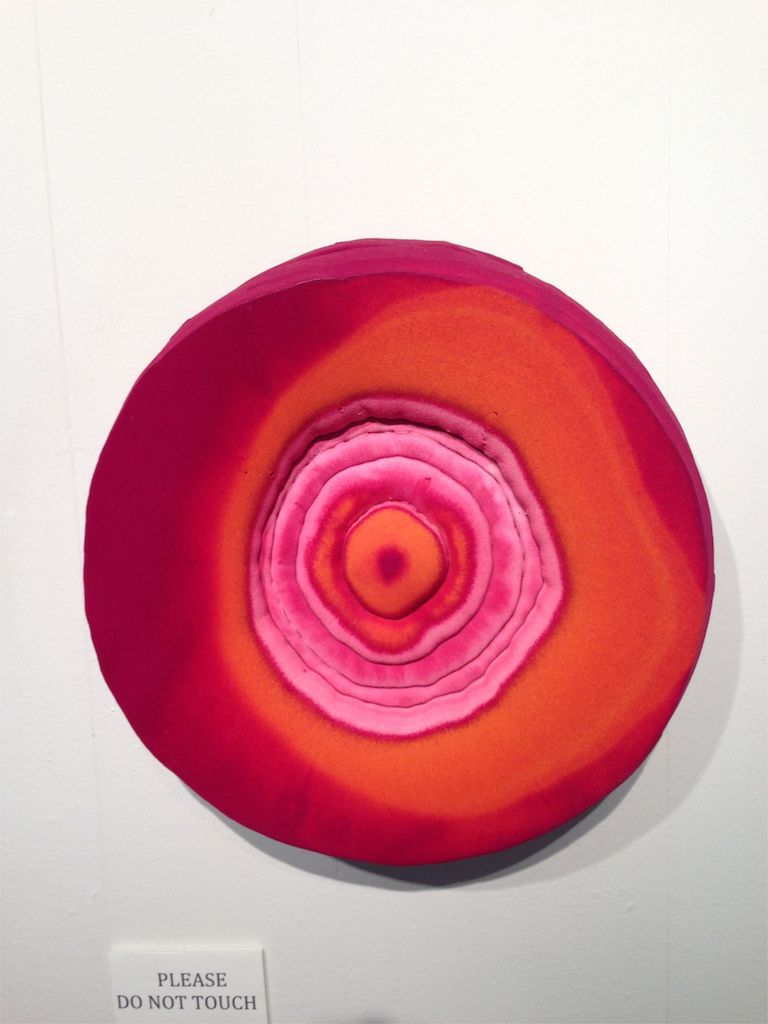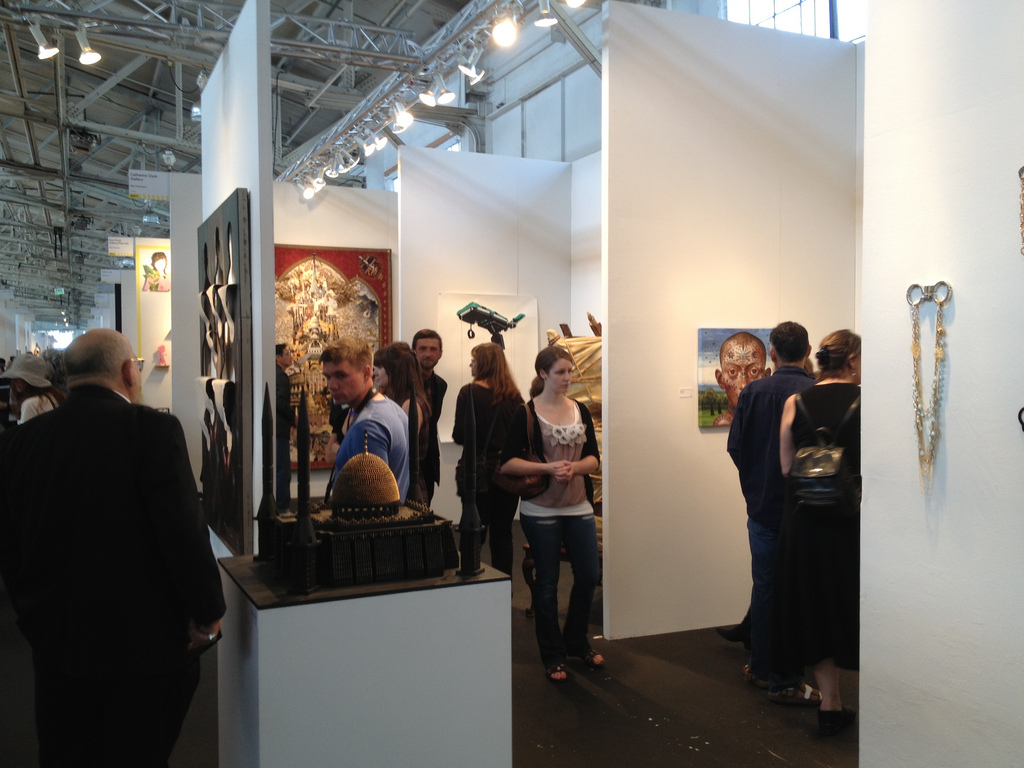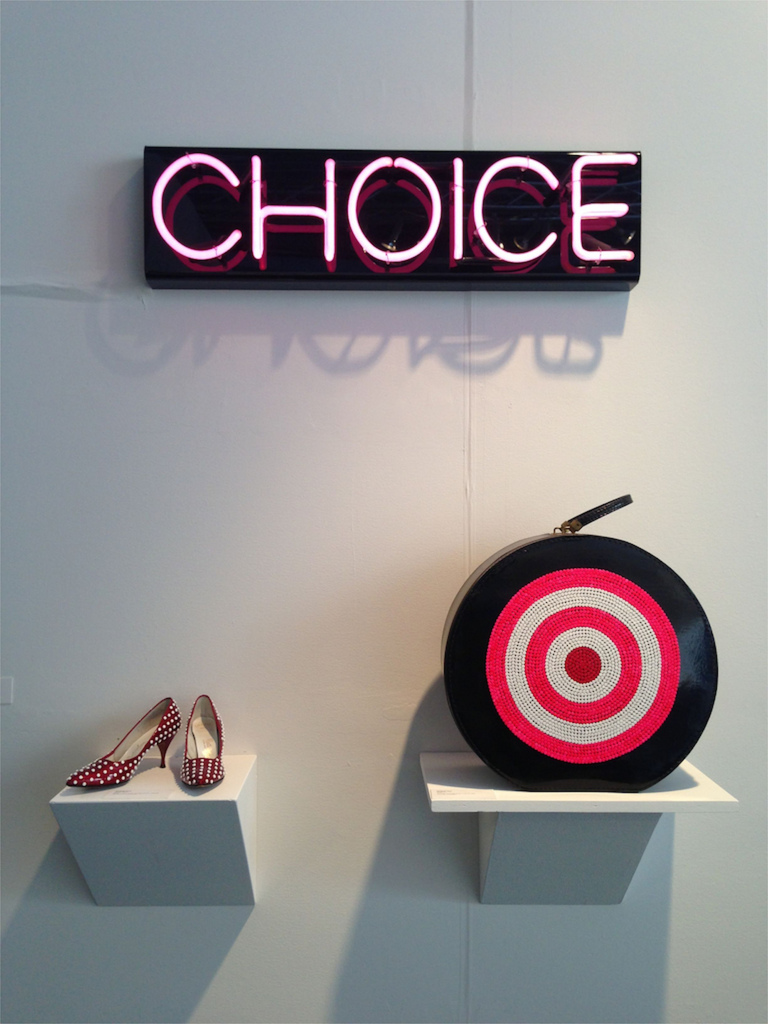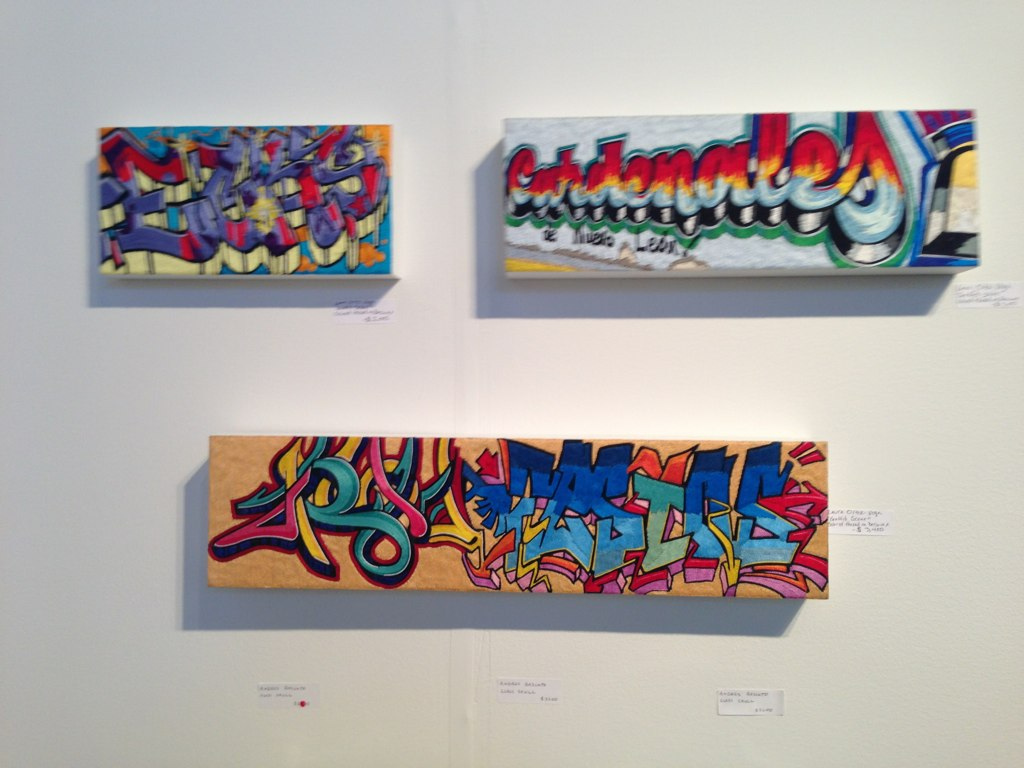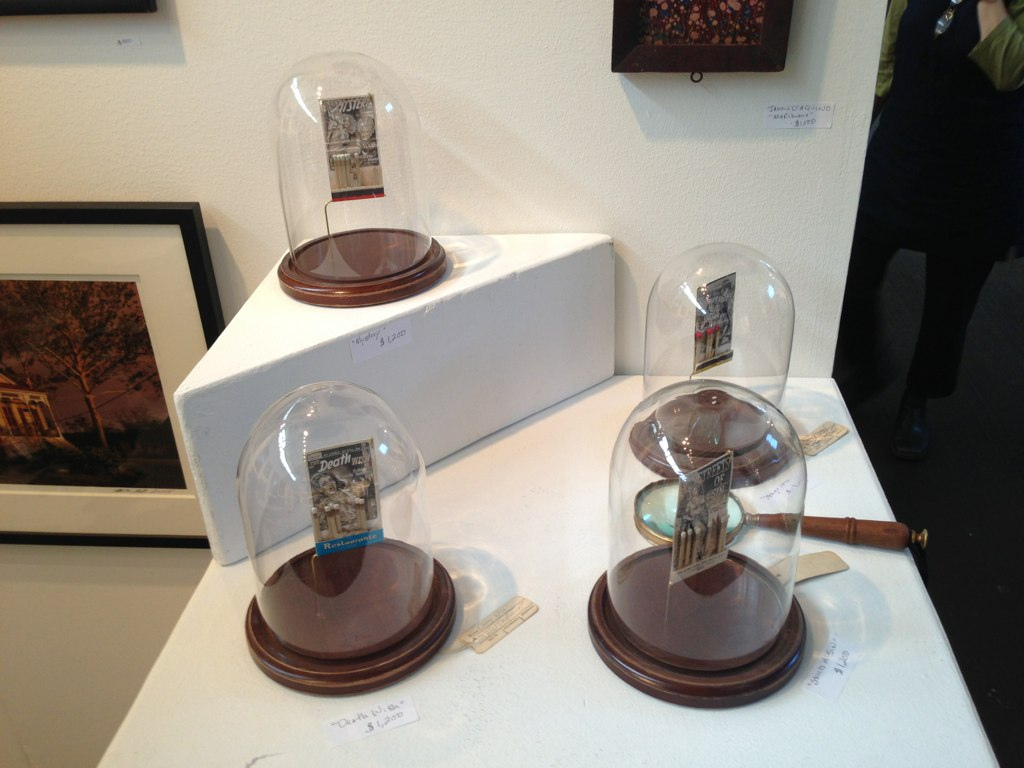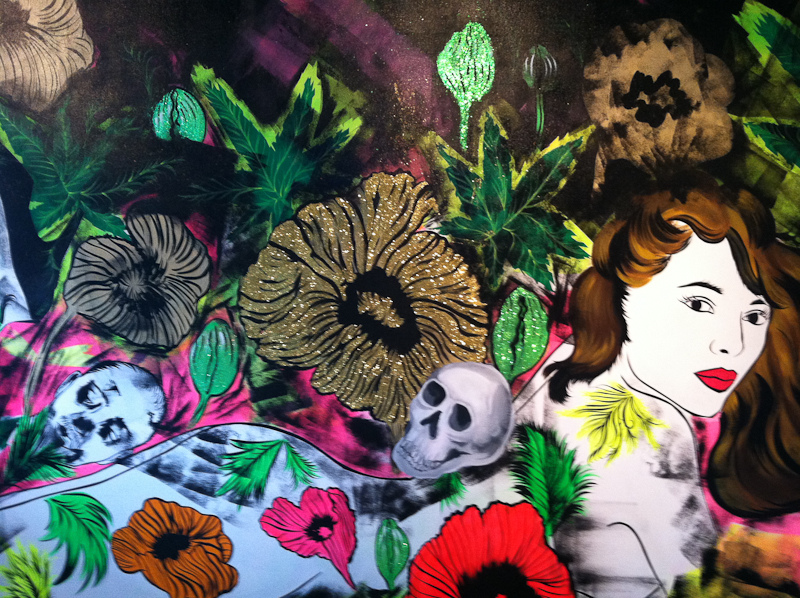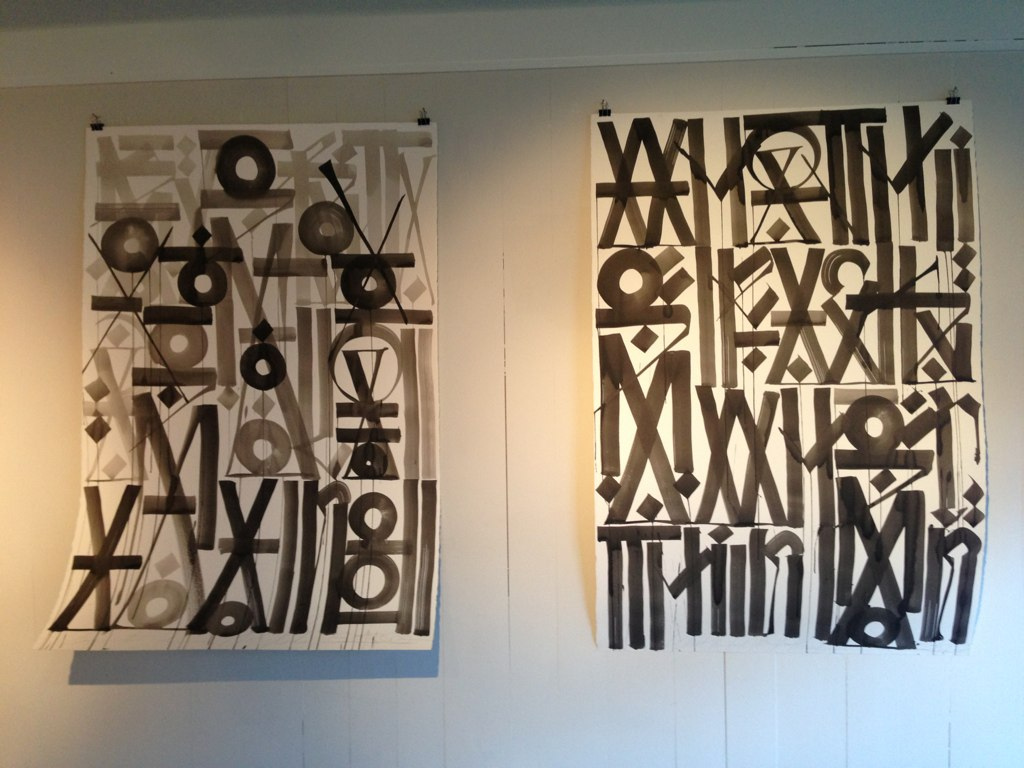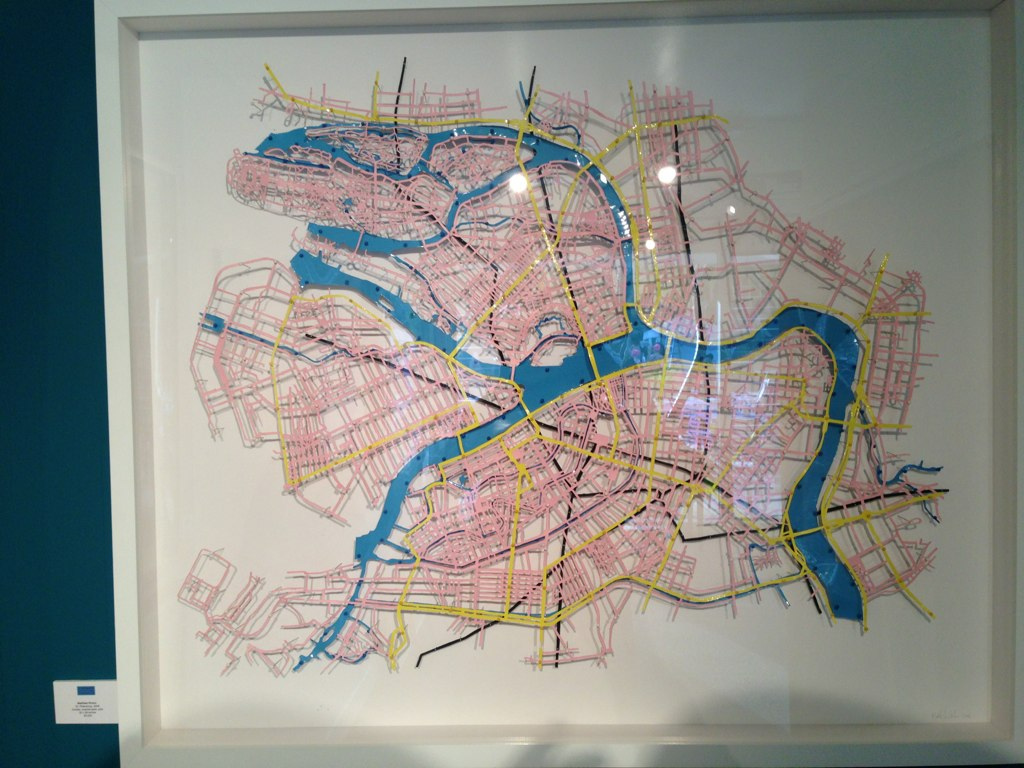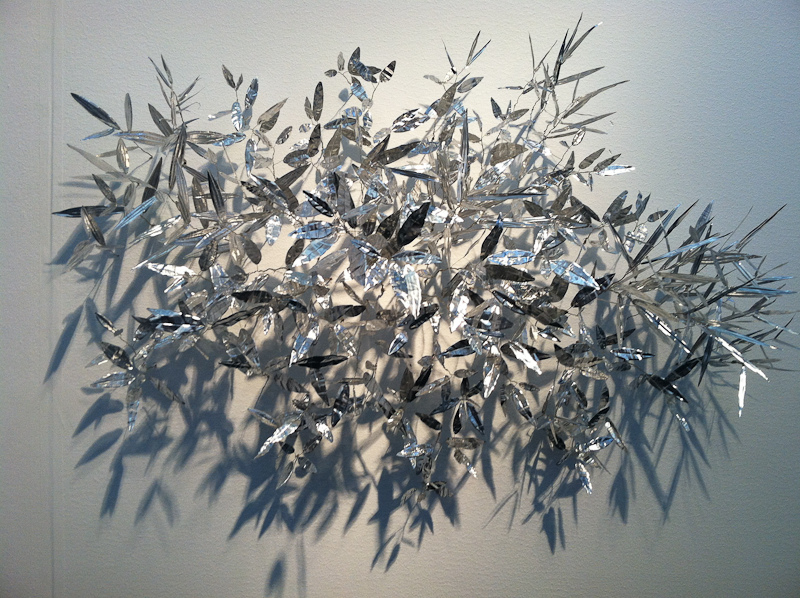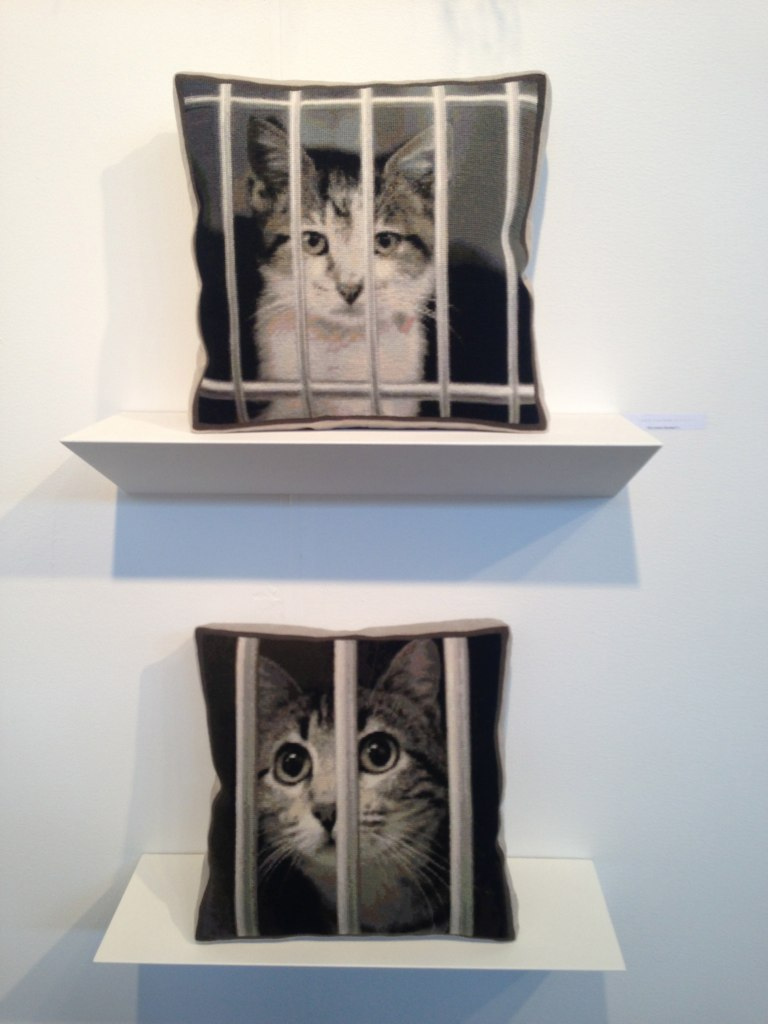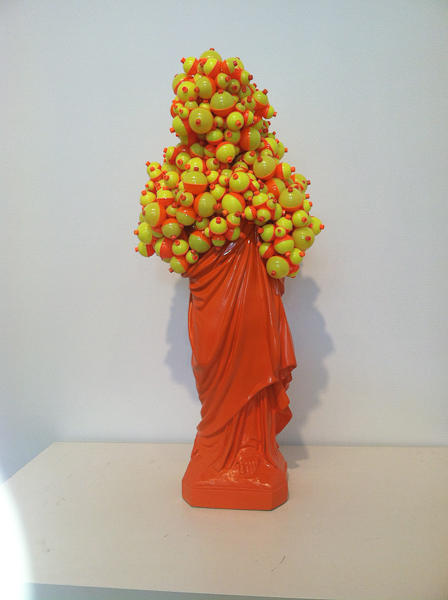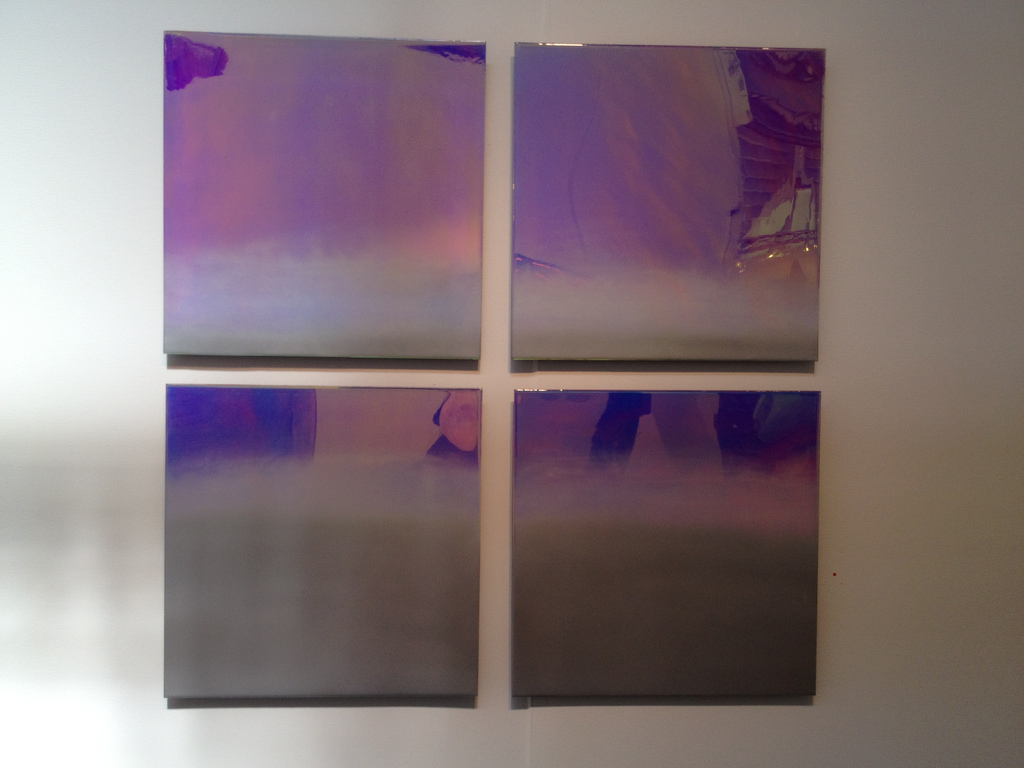Posts
Bay Area & Beyond
- View Bay Area posts >> | View Beyond posts >>
Christian Viveros-Fauné penned this succinct argument indicting the current crop of "ultra high net worth" art collectors, whose conservative interests lie less in creative experimentation than in potential ROI, and whose considerable resources are now funding the presidential campaigns of the likes of Marco Rubio and Jeb Bush. I'm not sure that laying full blame at the feet of these collectors for driving the high degree of artistic blandness he describes as being on display at Art Basel Miami is an entirely fair assessment, but much of the fault undeniably lies in the patronage structure of the art economy, and experimentation and risk-taking seem currently to be playing on the losing side.
Beyond
Nao Bustamante to lead USC Roski School of Art and Design’s MFA program
- Saturday, October 24th, 2015 | (0) Comments | Add comment >>
Performance artist with bay area roots Nao Bustamante will be helping reshape USC's MFA program starting in January 2016. Bustamante will have her work cut out for her - she joins USC in the wake of the recent defection of an entire MFA class over program promises broken. Stretcher wishes Bustamante the best of luck in her new position.
Two thought-provoking articles recently surfaced in the international press that lay bare the economics of the visual arts system. In a roundup of an unusually hectic summer market, Kenny Schachter names names and discusses deals gone wrong in a recent edition of Monopole. If you didn't already know how the gallery/collector ecosystem works, worth a read. And, a summary of a study recently completed by the Paying Artists campaign published by the Guardian found that more than 70% of artists who took part in public exhibitions last year worked for free. More attention should be paid to the economic systems in which artists (try to) work - encouraging participants at all levels to engage rather than remaining passive, or worse, complicit in economic systems that undermine artists.
After relocating to the space previously occupied by Rudolf Zwirner, the Priska Pasquer Gallery has launched its inagural exhibition showcasing artists' responses to the "new modernist" present - and speculative future - of the digital age. In the gallery's statement Pasquer poses several broad questions: "How do artists respond to the digital transformation? What themes define art in the digital age? How does the digital age change the way artists view the world? How does art work in the digital age and how can artists respond to the new challenges that present themselves?" In "Reset I", the first in a series of curatorial and artistic explorations of these themes, Pasquer draws together works by an international roster of twelve young artists, and includes an array of approaches - sound and video, 3D animation, performance, paintings, and sculptural objects. Among those works on display: in "Level Cleared", American artist Evan Roth presents a giant grid of tiny hand-dated, transparent fingerprint smears, suggesting both an ink-and-paper displacement of touchscreen interactions and the hasty, distracted repetition of biometric recognition. German artist Adrian Sauer takes the notion of the grid more literally in a series of photographs of humble graph paper. The transition of photography from a chemical to a digital, algorithmic process, subtle variations in the monotonous sameness of blank grids, and the camera's distortion of the very precision demanded by a grid all subtly reveal the lie of control and precision that digital media promises.
Priska Pasquer Gallery
September 5 - November 14, 2015
https://priskapasquer.com/?v=3a52f3c22ed6
It's been a little over a month since the annual art fairs all returned to San Francisco on a single weekend. This year there were just two art fairs instead of three: ArtPadSF was once again at the Phoenix Hotel, and an expanded artMRKT took over the Fort Mason exhibition center. Consolidating to two fairs at once seems more reasonable. Not only is it less overwhelming for attendees, but the shakeout has left a strong dichotomy between the two. artMRKT is an international art fair in San Francisco, while ArtPadSF is a "San Francisco Art Fair." The latter is very intimately tied to the character of the city and specifically to the surrounding neighborhood, with the exhibitors in hotel rooms around the central pool, surrounded by the buildings of San Francisco's Downtown/Tenderloin neighborhood.
One of the implied themes of ArtPadSF was art at all levels of the event, from the city setting, to the architecture and vibe of the Phoenix Hotel, the exhibitors' use of the hotel rooms, and finally to the works of art themselves. At the city level, a video installation by Andrew Benson entitled Shine Bright Plastic Diamonds projected on the wall of a nearby building, putting the art back into the surrounding neighborhood. The pool acted a centerpiece for performances, such as the Tsunami Synchro synchronized swimming team.
The hotel rooms can be challenging spaces for exhibiting art, but some galleries were quite creative in their presentations. Notably, McLoughlin Gallery turned the centerpiece of Cristobal Valecillos' recent solo exhibition American Family into a custom entrance to their hotel room. Visitors walked through the entryway, constructed entirely of cardboard, to enter the interior of the room which featured Valecillos' portraits.
Overall, ArtPadSF tends to have a higher concentration of quirkier and edgier works on display each year. Longtime presenters Marx & Zavattero introduced mix-media pieces by David Hevel that were fun and unusual in their textual coarseness for an art fair.
Non-standard materials seemed to be a focus in much of the art on display. It is not every day that one encounters artwork made entirely from trailer rubble, but this is precisely the source of Elizabeth Dorbad's pieces presented by Unspeakable Projects.
On the other end of the scale for source material and finished product, artist Andrea Patrachi repurposed old cameras to make robots in a quirky display presented by Mirus Gallery.
There were also works beyond the traditional physical materials and dimensions, such as a variety of pieces for video and multimedia. One of Oakland's more experimental galleries, Krowswork, made strong use of their space combining projected video and physical media at different angles to create a single immersive experience. Their presentation included subtle video and sculptural works by Mark Baugh-Sasaki and striking performance videos by Monet Clark.
Source materials even brought in the conceptual, as in Hughen/Starkweather's pieces based on data from architectural plans of the Bay Bridge, presented by Electric Works. Their work featuring architectural precision and analytical elements, but also more organic and liquidy elements that give the art an unexpected sense of warmth.
In keeping with the San-Francisco-centric nature of the exhibitions at ArtPadSF, Electric Works also includes a wall of amusing drawings by local luminary Dave Eggers featuring animals and snarky captions. Eggers' drawings are an "analog" version of the popular captioned internet photos, but with darker and more subtle humor.
Although a majority of the exhibitors were local, there were still a few galleries from elsewhere. Beta pictoris gallery / Maus Contemporary came from Birmingham, Alabama, and presented an eclectic mix of two-dimensional and three-dimensional works. Susanna Starr's aptly named Magenta / Orange was among the more visually captivating in its simplicity, but also a bit perplexing in its uneven texture and shape, which invites speculation on what it is and how it was made.
The setting and tone for artMRKT were a stark contrast to ArtPadSF which took place at the Fort Mason Center Festival Pavilion, a large exhibition hall along the bay. Light and airy, the space provided a blank canvas for the exhibitors and artworks.
It all seemed quite conventional. This is not to say that there wasn't unusual or compelling work to be found. Michelle Pred's trio of red conceptual pieces from Nancy Hoffman gallery stuck out for its combined composition.
A fun exhibitor that has been at artMRKT for a couple of years is New-Orleans based Red Truck Gallery. The art they display is difficult to categorize, but tends to fall into a mix of styles that blend traditional craft, found objects and contemporary urban sensibilities. Their exhibition was larger this year and featured more artists, including graffiti-inspired pieces by Laura Ortiz Vega and glass-encased objects by Jason D'Aqiuno.
The space at the larger fair also opened up opportunities to consider larger works. Joanie Lermercier's "Light Sculpture" pieces from New-York-based Muriel Guepin Gallery featured arrangements of large rectangular prisms (or cuboids) on a human scale along with light projection. Her pieces also included prints and video.

artMRKT’s international scope meant a broader geographic sampling of galleries than at ArtPadSF. In addition to several exhibitors from New York and Los Angeles, other cities and galleries were represented including Zemack Contemporary Art from Tel Aviv, Israel. Zemack presented Israeli artists in its exhibit, including Angelika Sher.
Closer to home, there were more Oakland galleries present at artMRKT, including Mercury 20 and Chandra Cerrito Contemporary. Mercury 20 featured works from member artists, including Charlie Milgrim. Chandra Cerrito featured some larger-scale works, including the captivating Ghost in the Machine by Randy Colosky. Familiar San Francisco galleries such as Stephen Wirtz and Jack Fischer, were also at the fair for the first time.
It was interesting to see that several local galleries that were at ArtPadSF last year, including Mercury 20 and Swarm, moved to artMRKT this year. It seemed to be a deliberate move to feature Oakland Art Murmur participants as a group at artMRKT, though ArtPadSF officially had this listed in their program as well (but only two galleries were in attendance).
Despite the consolidation, two fairs and over 100 galleries is still an overwhelming amount of art for anyone to take in during one weekend. Now in year three, have Bay Area art fairs established themselves as a viable platform for art-lovers looking to discover new art, as well as galleries attempting to connect with new collectors? Record crowds and decent sales suggest that ArtPad and artMRKT may have finally found their legs. This year's change to fewer fairs, each with distinct focus seems successful. We'll have a better idea if this is a lasting formula when they come around again in 2014.
Below are more photos from both art fairs.
[Photos courtesy of Maw Shein Win, David Lawrence, and Amar Chaudhary]
ArtPadSF
Narco Venus (Angie) detail (2011), Carolyn Castaño, Walter Maciel Gallery
Cloud Jars, Rodney Ewing, photos on mason jars filled with water.
Blackout 2 (Fruit with Burning Cigarette) (2013), Tim Sullivan, Steven Wolf Fine Arts
Burning House (July, sunset) (2011), Carrie Schneider, moniquemeloche gallery
St. Petersburg, Matthew Picton, durular, enamel paint and pins. Toomey Turell gallery.
artMRKT
Wild Grass (2013), Kirk Maxon, Eleanor Harwood Gallery
Richard Bassett, Needpoint pillows. Jack Fisher Gallery
Sic Transit Gloria Mundi, Chester Arnold, Oil on Linen (78 x 94 inches). Catherine Clark Gallery.
Float (Orange), Keith W. Bentley, repurposed resin figure, plastic floats, paint, plaster, and steel.
Animalia Chordata, Gabriel Garcia-Columbo, multi-media and videos of 4 and 6 minute loops. Muriel Guepin Gallery.
Transformation Spectrum (2013), Miya Ando, K Imperial Fine Art
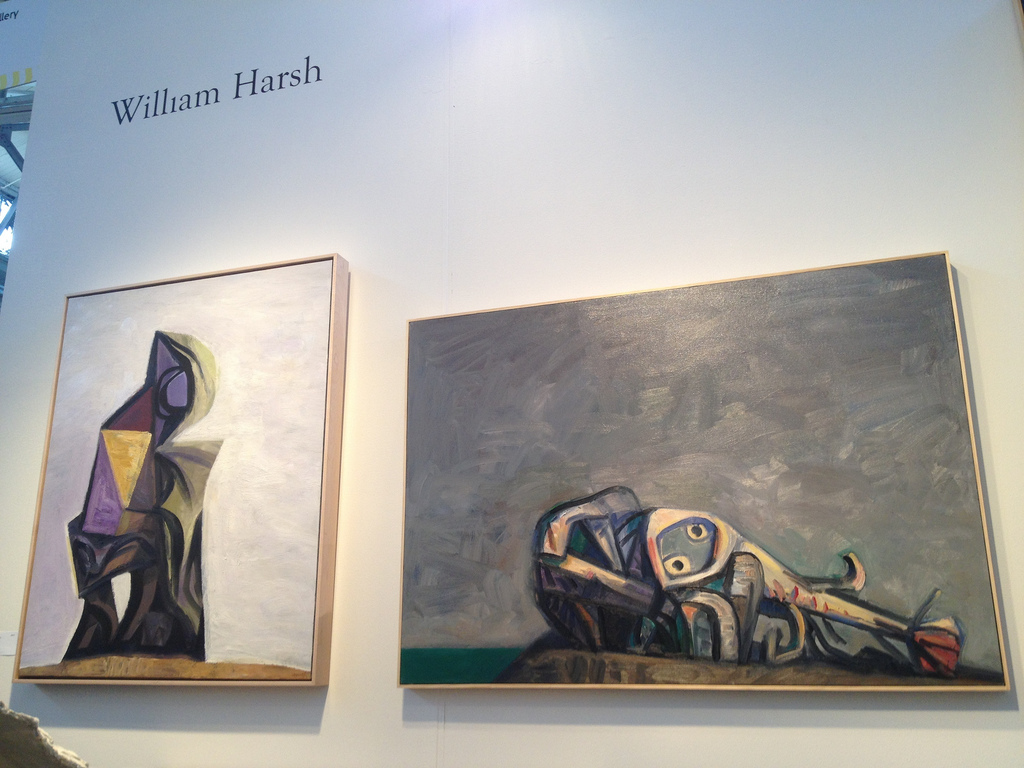
paintings by William Harsh, Vessel Gallery

Bottom 2, Bottom 3 (2012), Adam Parker Smith, Evergold Gallery
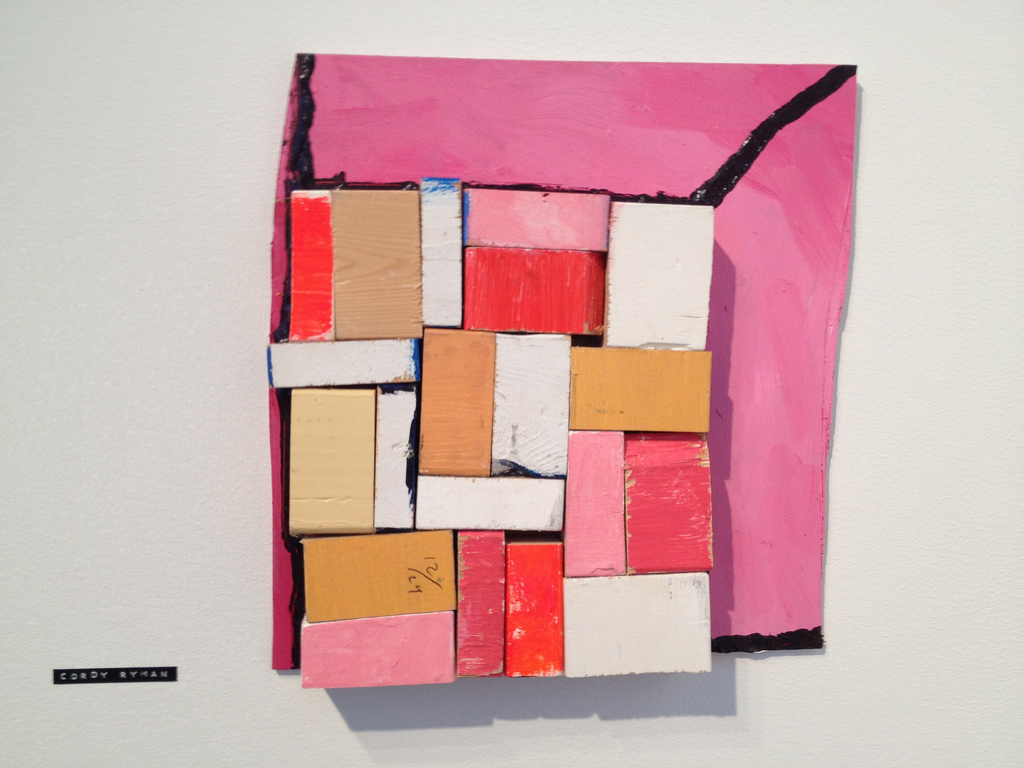
Rose Meridian (2011), Cordy Ryman Eli Ridgway Gallery
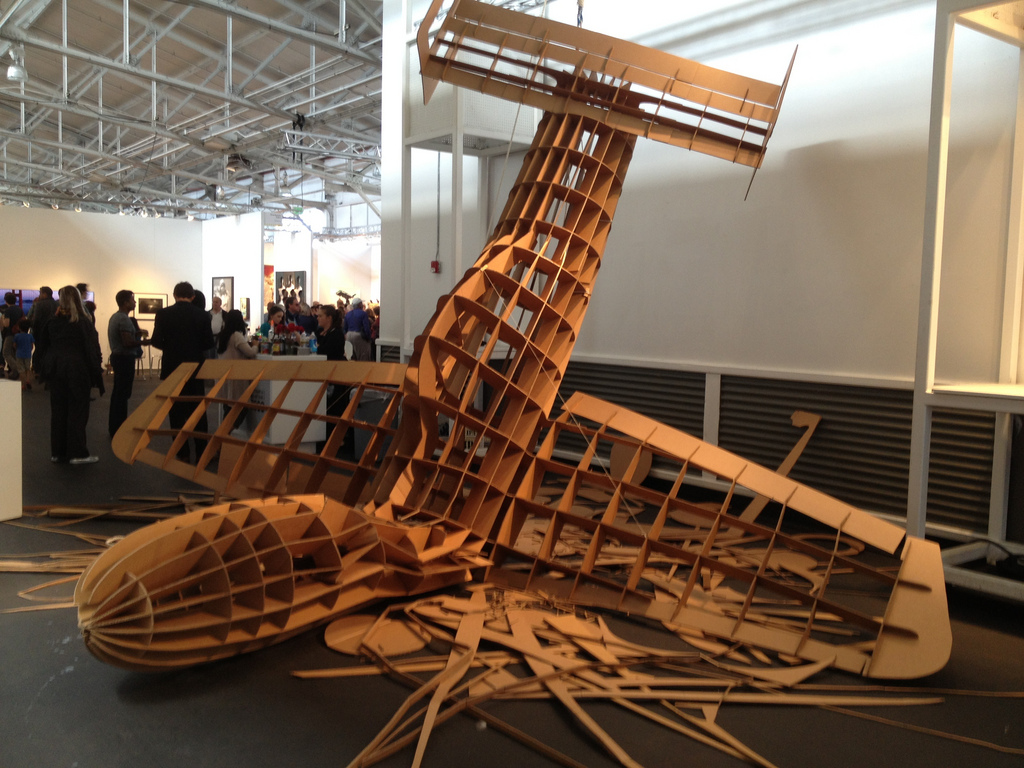
Obscenity - a version for brotherhood (2010-2013), Taro Hattori, presented by Swarm Gallery
Amar writes regularly about art and music in the Bay Area and blogs at catsynth.com.
The 55th Venice Biennial energetically shoulders through the ecologic and economic gloom hanging over the city, presenting art from a record number of nations. If one follows the intellectual route steered by Massimiliano Gioni, lead curator of the central international exhibition, the motley of competing shows even begins to make some sort of communal sense. By including historical artists (forty of the 158 artists in his exhibition, The Encyclopedic Palace, are dead) and extra-canonical art practices (including ceramic sculpture, voyeuristic photography, and "outsider" art) in his reading of "contemporary" art, Gioni recoups an emphasis on invention while sidestepping modernist notions of "progress."
Although curation of the national pavilions has little to do with the central show, the best work in the national exhibitions resonates with Gioni's undogmatic approach. For example, Britain's Jeremy Deller orchestrates photographs, murals, videos, and very welcome social practice (serving tea) into a view of Britishness that is simultaneously caustic and generous. And Tavares Strachan paradoxically manages to represent the Bahamas, with a sideswipe at colonialism, by planting his own hybrid flag at the North Pole. On the meta-political level, the turn away from didactic work seems hopeful. If there is a way past the climatalogical doom threatening humans and our biological cohort, it travels through the realm of things we don't know yet. On the artistic level, it means fresh art, not necessarily new art, but non-art-star work. The not-so-usual suspects hitting it out of the Giardini include sculptor Ron Nagle, whose suite of palm-sized, unnameable ceramic objects might just be the most sublime experience on the island.
The 55th Venice Biennial runs June 1 through November 24, 2013 at the Giardini and Arsenale in Venice, Italy.
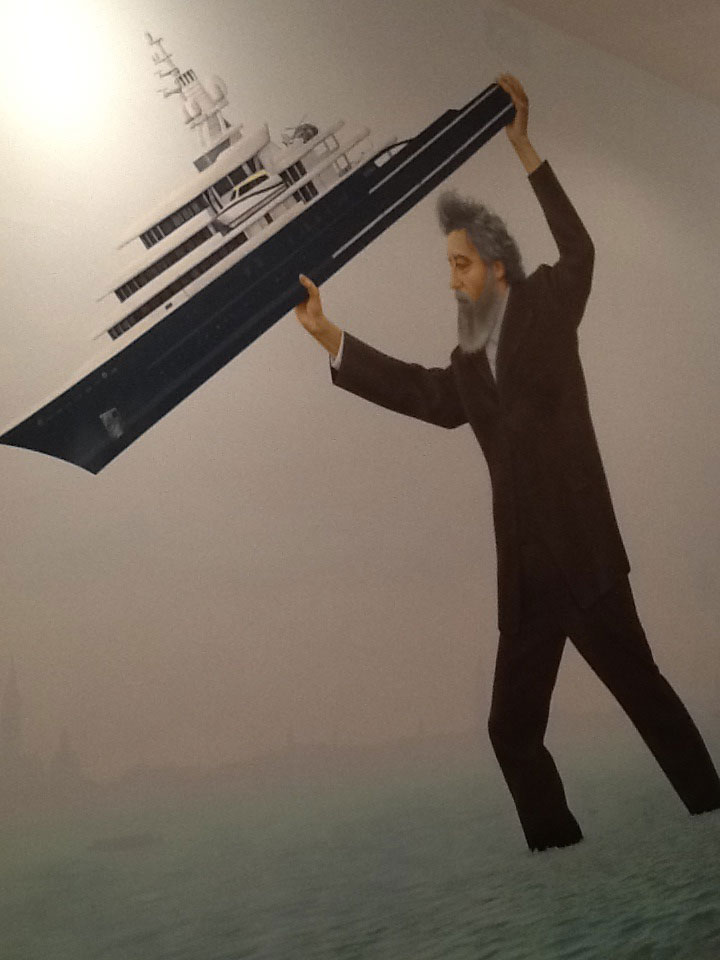
Mural of William Morris pitching Roman Abramovich's yacht away from the Giardini, one of the components of Jeremy Deller's British Pavilion. Abramovich's is infamous for mooring his yacht at the entrance to the 54th Venice Biennial.
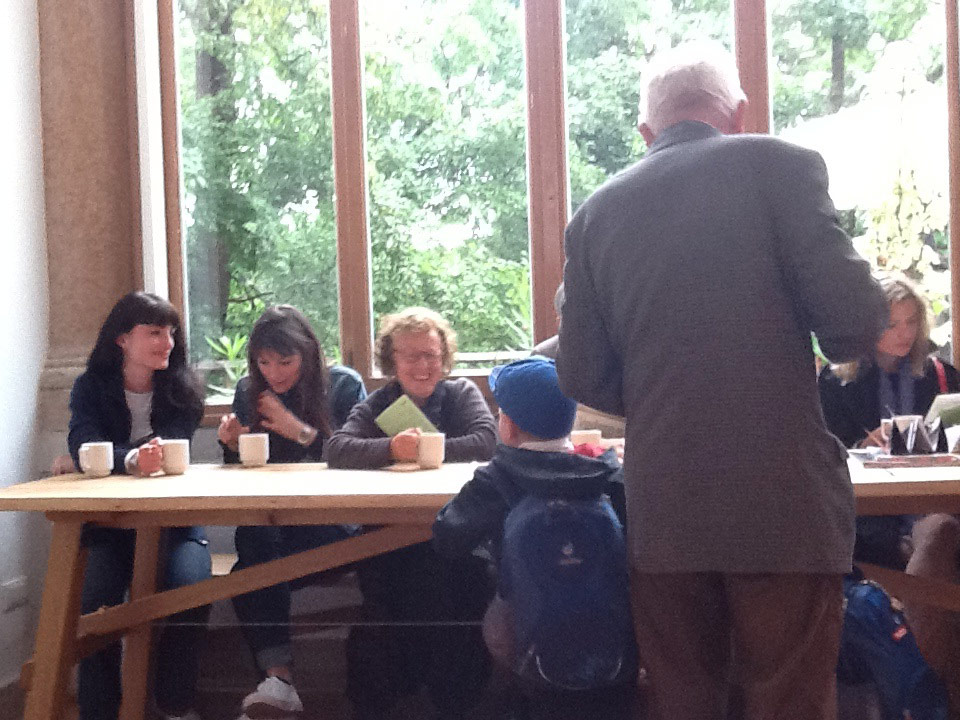
The "tea party" component of Jeremy Deller's installation at the British Pavilion

This is either ice from the North Pole or a clone of the original ice created by Tavares Strachan with the help of a physical chemist. Strachan no longer knows which piece is which.
From the editors
Authors from Posts
- Allegra Fortunati
- Amar Chaudhary
- amy berk
- Asha Schechter
- Aude de Bourbon
- Berin Golonu
- Charles Linder
- Cheryl Meeker
- Dale Hoyt
- David Lawrence
- Diana Gaston
- Ed Osborn
- Elise Barclay
- Ella Delaney
- Glen Helfand
- Gloria Tanchelev
- Happy D
- Jeannine McDonald
- Julie Deamer
- Mark Van Proyen
- Megan Wilson
- Meredith Tromble
- Natalie Welch
- Terri Cohn
- Tucker Nichols
Archived Posts
- December, 2015
- October, 2015
- September, 2015
- July, 2013
- May, 2013
- April, 2013
- March, 2013
- August, 2012
- June, 2012
- March, 2012
- February, 2012
- January, 2012
- December, 2011
- October, 2011
- September, 2011
- July, 2011
- April, 2011
- March, 2011
- February, 2011
- January, 2011
- December, 2010
- November, 2010
- October, 2010
- September, 2010
- August, 2010
- July, 2010
- June, 2010
- April, 2010
- March, 2010
- February, 2010
- January, 2010
- December, 2009
- November, 2009
- October, 2009
- September, 2009
- August, 2009
- July, 2009
- June, 2009
- May, 2009
- April, 2009
- February, 2009
- January, 2009
- December, 2008
- November, 2008
- October, 2008
- September, 2008
- August, 2008
- July, 2008
- June, 2008
- May, 2008
- April, 2008
- March, 2008
- February, 2008
- December, 2007
- November, 2007
- October, 2007
- September, 2007
- August, 2007
- June, 2007
- May, 2007
- April, 2007
- March, 2007
- February, 2007
- January, 2007
- December, 2006
- November, 2006
- October, 2006
- September, 2006
- August, 2006
- July, 2006
- June, 2006
- May, 2006
- April, 2006
- March, 2006
- February, 2006
- January, 2006
- December, 2005
- November, 2005
- October, 2005
- September, 2005
- August, 2005
- July, 2005
- June, 2005
- May, 2005
- March, 2005
- February, 2005
- January, 2005
- December, 2004
- November, 2004
- October, 2004
- September, 2004
- August, 2004
- July, 2004
- June, 2004
- May, 2004
- April, 2004
- March, 2004
- February, 2004
- January, 2004
- December, 2003
- November, 2003
- October, 2003
- September, 2003
- August, 2003
- July, 2003
- June, 2003
- May, 2003
- April, 2003
- March, 2003
- February, 2003
- January, 2003
- December, 2002
- November, 2002
- October, 2002
- September, 2002
- August, 2002
- July, 2002
- June, 2002
- May, 2002
- April, 2002
- March, 2002
- February, 2002
- January, 2002
- December, 2001
- November, 2001
- October, 2001


